1971 phase 1 Dieter Rams, Dietrich Lubs
Braun's first clock was the relatively primitive phase 1. Clearly a first effort, it gave no hint as to the breadth of design variety to come. It featured numbers printed on little plaques attached to a mechanical rotating mechanism. That being the case, the body was large while the numbers were small; a trade-off the designers would not be willing to live with for long.
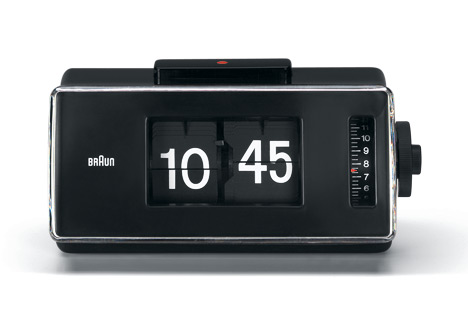
1972 phase 2 Dietrich Lubs
By 1972 they had switched over to a flip-clock mechanism, whose tighter mechanicals enabled a smaller form and a larger display. In the phase 2 we see the design team gaining mastery over the technology in order to improve the user experience. But they were not done yet; this form factor was still driven by its mechanical innards, which they would soon discard altogether. Cutting-edge technology was in the works for what would be their radical release of 1975.
1972 phase 3 Dietrich Lubs
At the same time they put the phase 2 on the market, Braun also dipped into the analog clock pool, releasing this compact phase 3 alarm clock. It bears virtually nothing in common with the phase 1 and phase 2, despite being released at nearly the same time; but it illustrates the design team's freedom to experiment, a characteristic Braun quality that would pay off time and again. The analog form factor would evolve into objects that collectors would treasure.
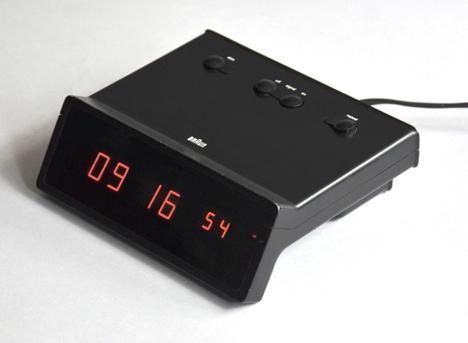
1975 functional Dietrich Lubs
By 1975 Braun's gorgeous functional was ready to go. As the mechanicals were now supplanted by eletronics, it no longer featured bulky innards that needed to be stuffed into a box; Dietrich Lubs took full advantage of this, creating a clock comprised of two slim, intersecting components. The rear, horizontal portion houses the circuit boards and supports the buttons (which were raised, so they could be located in the dark). The front portion held the gas discharge display, which was angled upwards for easy legibility.
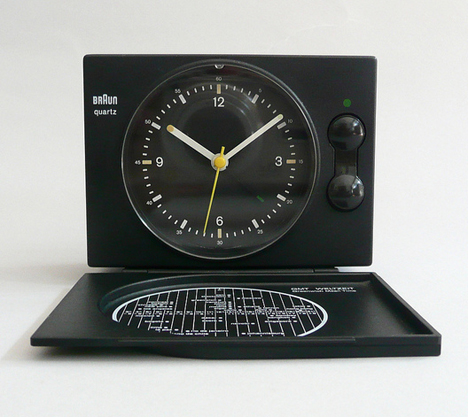
1976 DN 40 Dieter Rams, Dietrich Lubs
If the functional is a greyhound, the subsequent DN 40 is a chunky, fun puppy running behind it. The bright color and softer form was quite the departure from thefunctional, and well illustrates Rams and Lubs' willingness to experimentally evolve. The technology was upgraded as well: The display here replaces gas-charged with fluorescent.
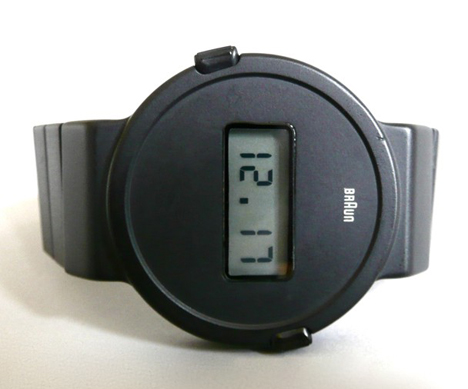
1977 DW 20 Dieter Rams, Dietrich Lubs
As with their first foray into clocks, Braun opted to go with a digital readout for their first wristwatch. Cramming that amount of technology into a wrist-mounted device was not a trivial task in 1977, and it shows with the chunky body and relatively tiny display.
The New Era
By the 2000s Braun had experienced tremendous growth. In 2002 Braun revenues hit the 1.5-billion Euro mark, and across all of their product divisions, the electric razor and oral hygiene categories were particularly dominant. They were eventually faced with the quandary that all ever-increasing businesses have to deal with: Do we risk spreading ourselves too thin, or knuckle down and concentrate on a few divisions? The decision was made to license the timepieces category out, enabling the design team to focus on shavers, grooming, haircare and oral hygiene.
The good news is that they left Braun timepieces in good hands: Watchmaker Zeon licensed the name and today produces a line of wristwatches reminiscent of earlier Braun designs, as well as newer products like the Prestige digital watch, last photo below, which won both iF and Red Dot Design awards in 2012. Wall clocks, digital clocks and travel clocks round out the full collection of modern-day Braun-branded timepieces.
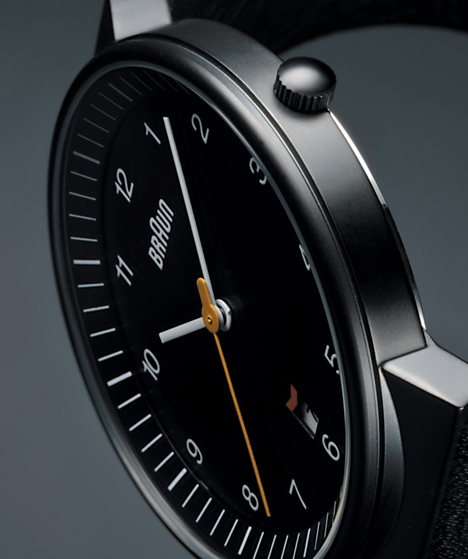
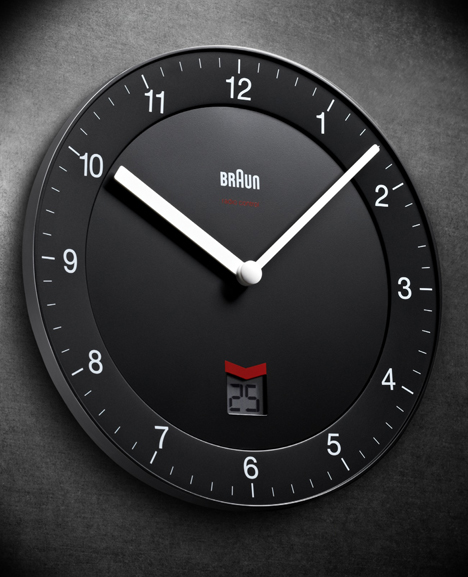
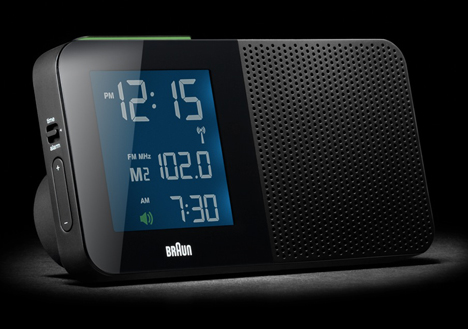

source: core77
